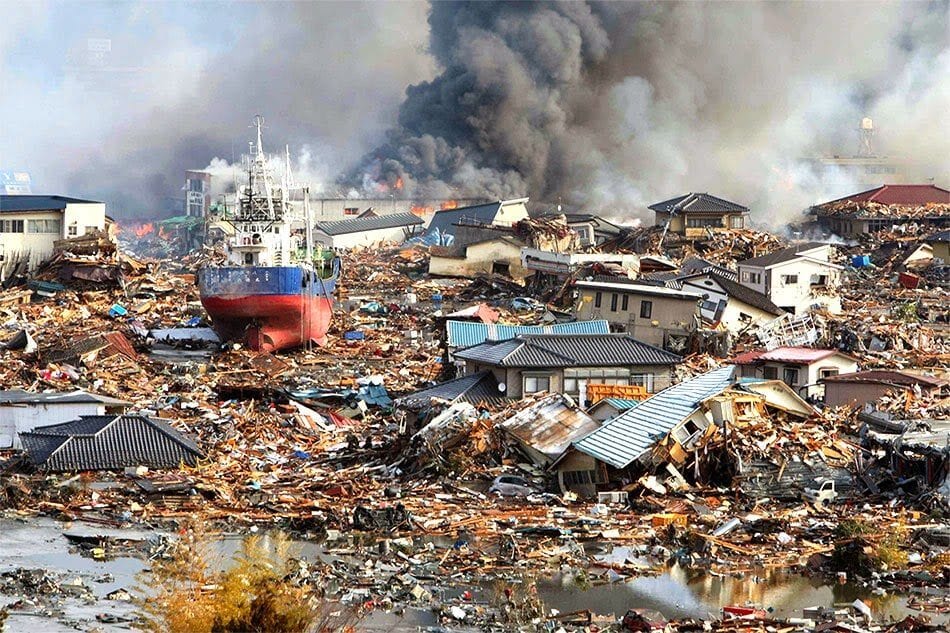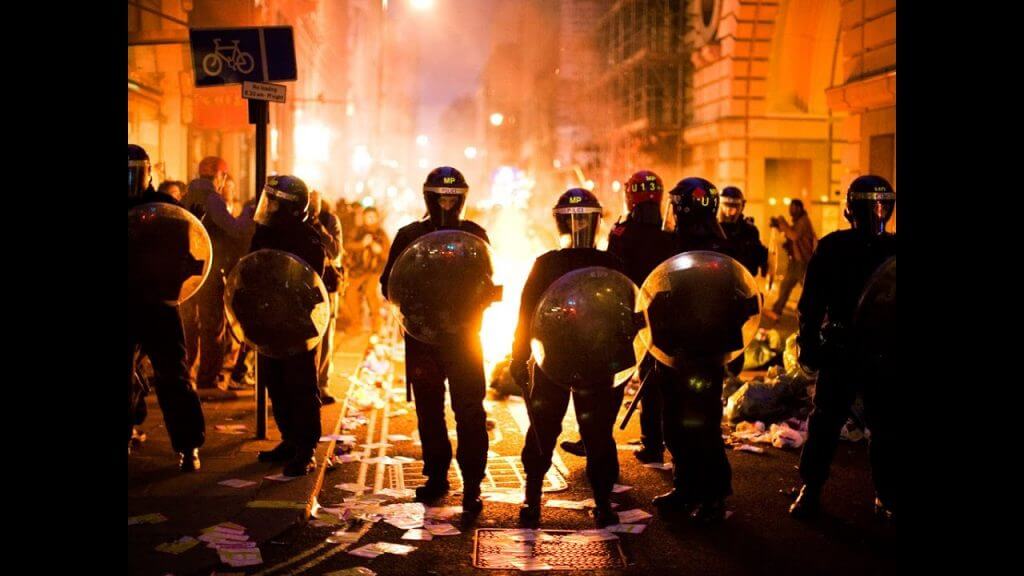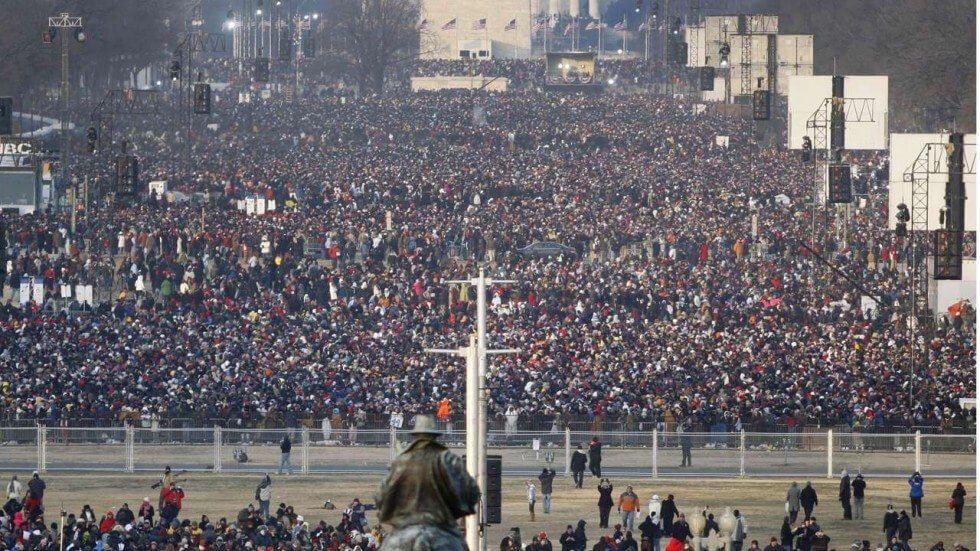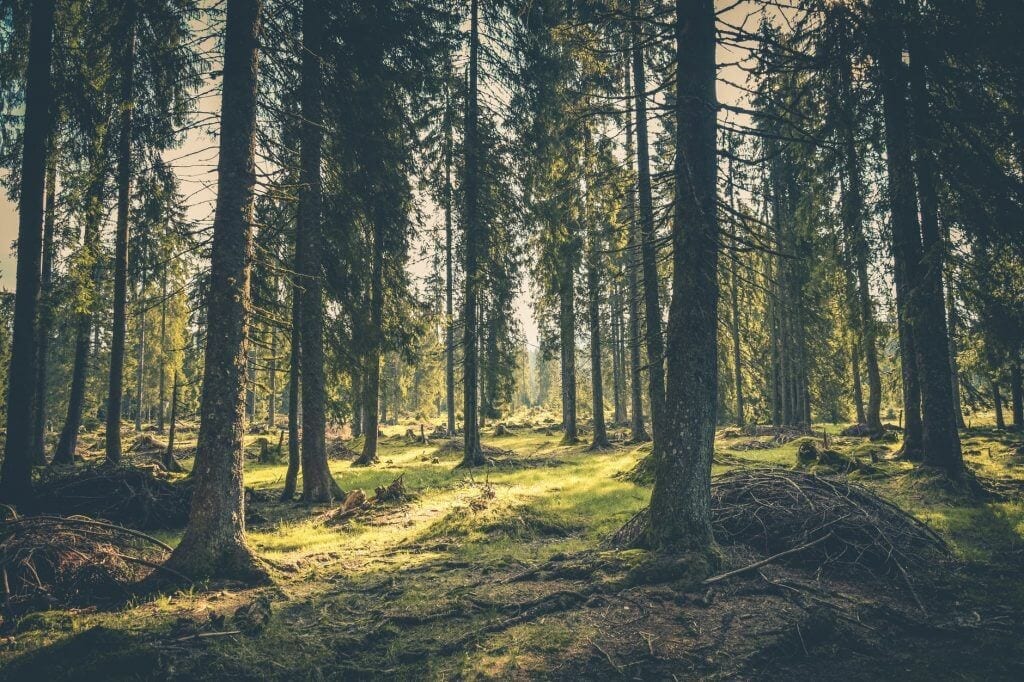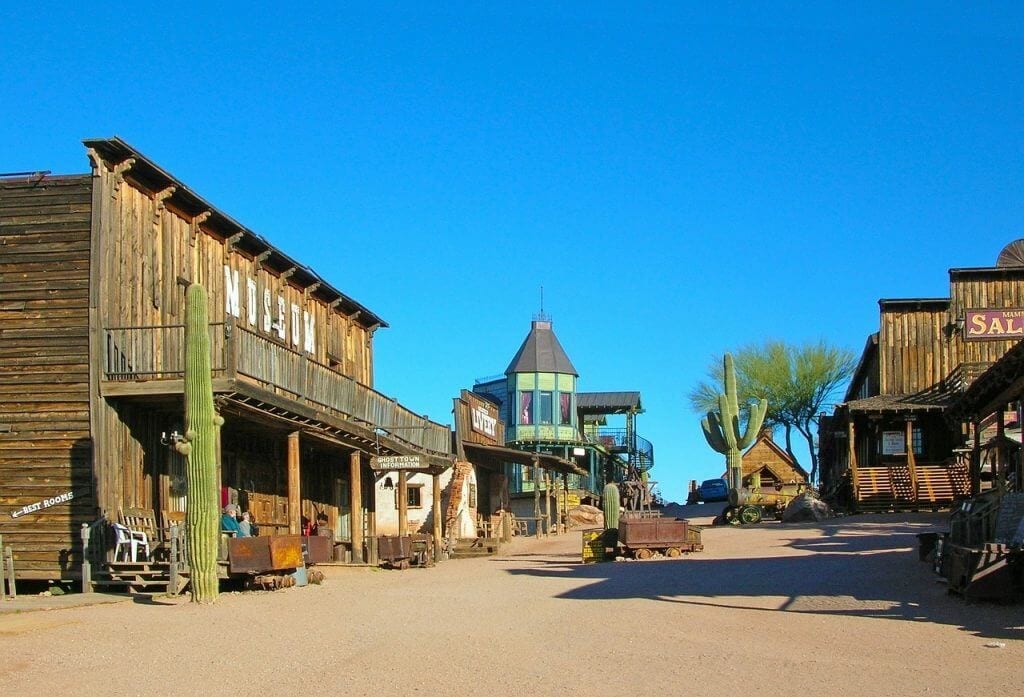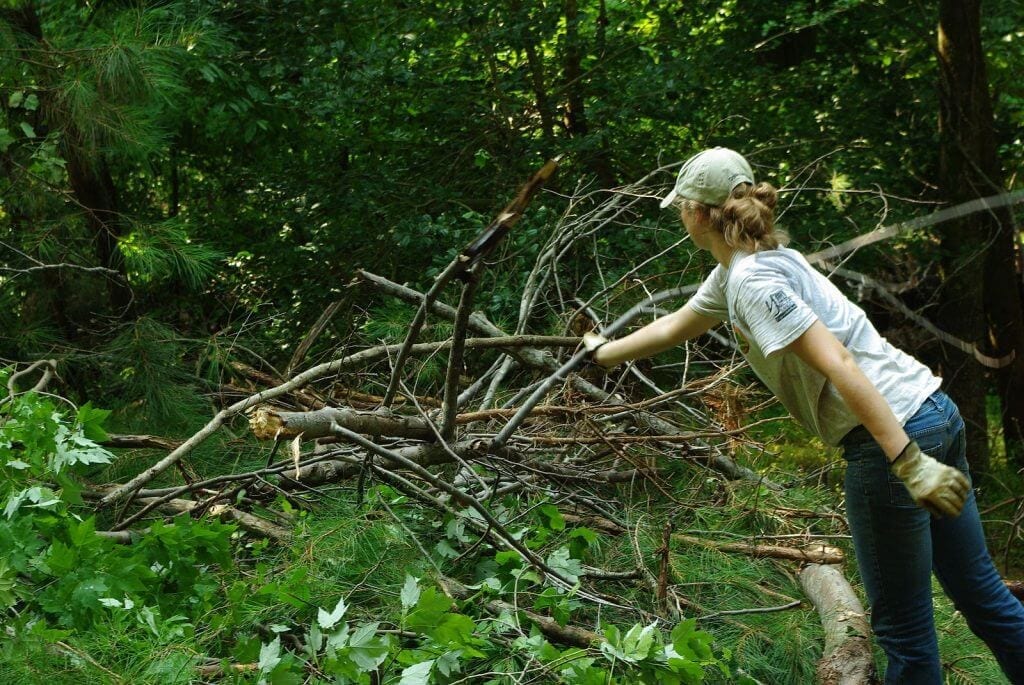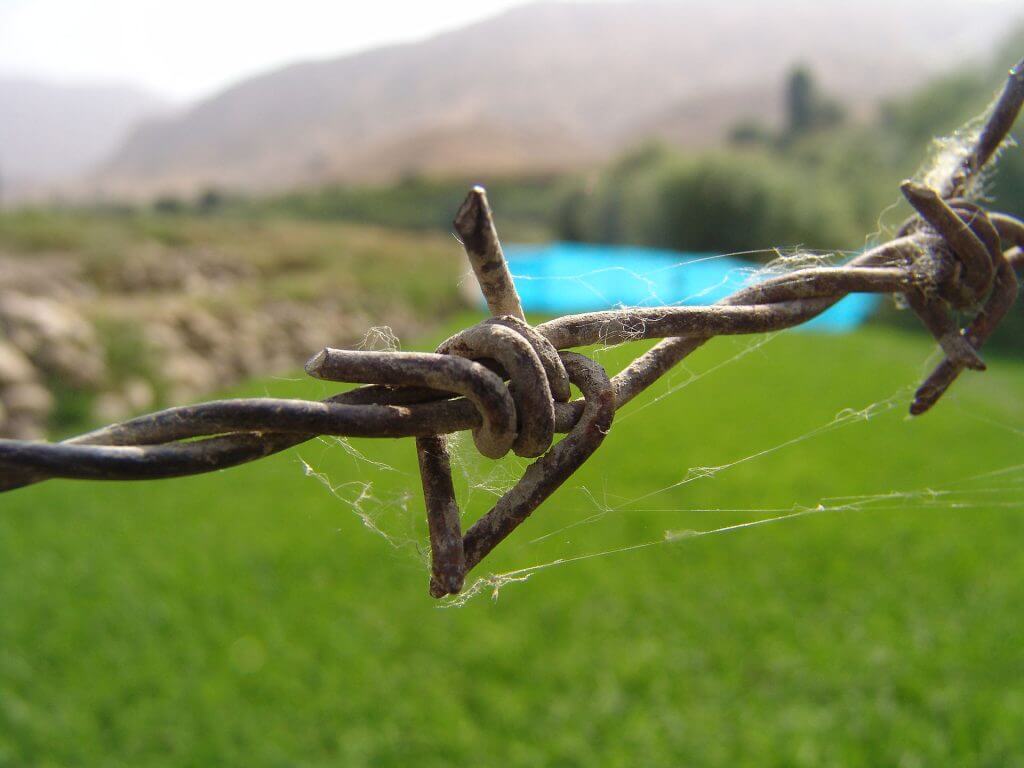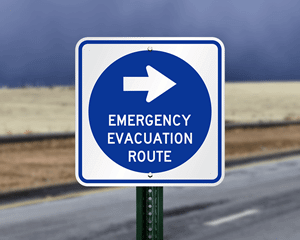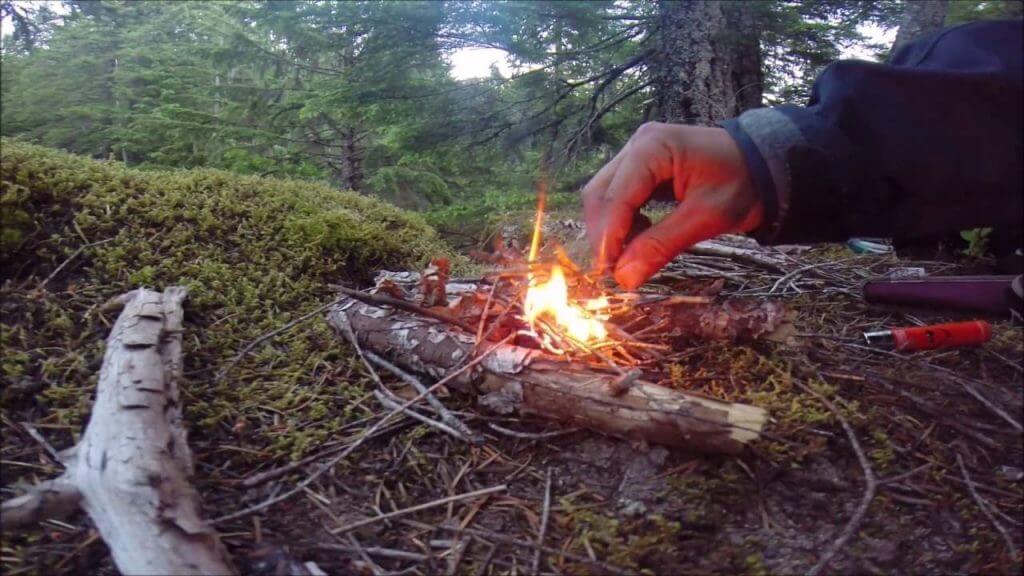If a natural disaster or widespread emergency happens, you’ll need a secure location for your bug out shelter. Leaving this unplanned will place you in the same position as the other millions of people scrambling to find somewhere to live. If you don’t take the time to plan this before disaster strikes, you will have to compete against other people for resources. Just in case you’re new to this idea, what does “bugging out” mean?
To bug out originally meant to retreat or flee during military action. But in the prepper community, it essentially means to leave your home in a hurry. To have a bug out plan, you must have a location planned for where you’ll go in this situation.
When to Head to Your Bug Out Location
One of the most logical questions you can ask after thinking about deciding on a bug out location is how you’ll know it’s the right time to leave your home. This can be a difficult question as many disasters can arise with no warning and they can be so different from each other.
Image via Sociocosmo.com
Before getting deeper into this question, it’s important to mention that in most cases, home survival will be a better bet than bugging out. Staying at home during an emergency will be a safer choice if you have a solid plan in place for it. That being said, there are a number of scenarios where this may not work. Let’s take a look at some of these now. You should consider bugging out…
When You’re Under Attack
This is an unlikely scenario depending on the severity of the emergency underway. But you will have to think about what would happen if your house were under attack. A Molotov cocktail, band of pillagers, or even bullets could strike with no warning, and then what would you do? Your house will hide you from view, but eventually, someone may come looking for supplies. In this situation, a bug out plan is going to be preferable to staying home.
When Your Environment is Unsafe
The emergency event that occurs may be a hurricane, fire, or flood. In one of these situations, you will probably want to leave your house. Make sure you have your bug out bag ready, a plan set in place, and get to a safer location. If you have a family or group you want to stay with after disaster strikes, set up a meeting spot to go to in case of disaster. Have routes set in place and alternative routes in case the original ones are closed or blocked off.
Image via Bicycledutch.wordpress.com
When Your Resources are Running Low
If your situation gets serious and you begin running out of your stockpiled resources, it may be time to head to your bug out location. Don’t forget to account for the food and water you’ll need during the bug out experience, as well. When you look in your basement and start to get worried by how empty it is of supplies, you might have to go. An exception to this is families or individuals who have been homesteading for a while and have their own independent supply of water and food.
When Your Instincts Say It’s Time
This type of event doesn’t follow a set of rules or guidelines. You may plan for months thinking that you’ll definitely stay home in case of a widespread emergency, only to find that it’s all wrong when the time comes. Use common sense to find the appropriate solution. If your instincts are telling you that staying home would be a bad idea, you’d be wise to heed that call. This is especially true if you’re a parent. Make sure you pick a location beforehand and be ready to build your bug out shelter.
In addition, keep your eye on local events so you can get ahead of the curve (and hordes of people) when a game-changing event hits. Situations such as a severe economic depression or political instability could be signs that it’s time to find a safer place for a bit. Some people may want to stay and protect their house, but if your health or life are at risk, it’s a different story.
Image via Youtube.com
Of course, ultimately it’s up to you what you will do in this situation. But having a bug out location mapped out ahead of time will save you plenty of stress just in case you do have to leave. And without further ado, let’s get into some details about how to choose the right bug out location.
Requirements for a Great Bug Out Shelter
There are going to be certain places that are more suitable for supporting life than others. For example, living in a forest full of animals, plants, and streams is far preferable to camping out in the desert. But what are the top requirements for a good spot to head to when your home becomes uninhabitable?
Water
If you can afford it, buy some property or land close to a body of fresh water. Aside from sanitation and drinking purposes, water may also generate power if it’s running downhill fast enough. Water is not only necessary for these purposes, but also for gardening, cooking, hygiene, and more. Make sure this base is covered if you want any shot at survival! Here are some general guidelines to remember in finding water sources in the wild:
Seek Out the Cleanest Sources
This should go without saying, but try to find the naturally cleanest forms of water you can. This is particularly necessary if you don’t have a water-purifying system in place. Finding clean and safe drinking water is another story, however, and can be hard depending on your location.
Lakes or Rivers
Finding rivers or lakes is easy. They are big, very visible, and it’s simple enough to follow plants to these sources of water. But although they are the easiest to find, they are not best for drinking as they require more extensive purification.
Underground Sources
It’s also possible to find water underground if you don’t mind digging. Seek out dry river beds, swamps, or muddy areas as these are where water collects under the ground. Just dig a hole and you’ll have some water to purify and drink.
And the most ideal situation will be fresh water from a spring or stream. If you are by a mountain, just hiking to its top can be enough to find water. If it’s a very high mountain, just hike to the top and you will find ice and snow. Sometimes, you’ll be lucky enough to find spring runoff from these ice and snow collections. Even though it will usually be safe enough to drink straight away, purifying it is even safer.
Accessibility
Even if your bug out location is perfect, it won’t be of any use to you if you can’t get to it when you need to. Planning out alternative routes is a good start, but first and foremost, make sure you will be able to get to the area no matter what. That being said, you’ll want a place that is secluded. It should be accessible to you, but hard to find for strangers. Rehearse getting to your location many times before your life depends on it. In fact, you’d do well to set up weekly rehearsals with everyone in your bug out group.
Distance
Obviously, when a disaster strikes, you will be just one of many people trying to find a safe place to flee to. You can expect that nearly everywhere will be overrun with hordes of panicked individuals seeking safety. For this reason, it’s safest to plan for your bug out location to be a good distance from densely populated areas and roads. If you’re too close to or visible from roads, you’re just asking for trouble.
Image via Scmp.com
Familiarity
You may be tempted to choose the location you think is most exciting for your bug out spot. But what matters more than that is how familiar you are with the place you choose. You’ll have a far better chance of survival if you’re already well-acquainted with the weather patterns in the area, along with the local plants and animals. Go for a place that you’ve visited plenty of times or even somewhere near where you grew up.
Do some research and find out ahead of time what animals you can expect to encounter in the area if you don’t already know. Some animals will be a threat to your survival, others will want to eat your crops. Others still will make good game and supply you with food. Arm yourself with information about the local flora and fauna, and not to mention where water and roads are located.
Climate
Climate is another important factor when it comes to survival. A mountain might be a perfect choice for bugging out to in the summer, for instance, but what about winter? If possible, choose somewhere livable and hospitable during all seasons. Or at the very least, be familiar enough with the seasons in the place you choose to survive them at all times of year.
Choose some land that has survivable temperatures and a good climate. Facing a harsh winter without any heating is not something you want to worry about when you’re planning for survival. You will already have enough on your plate as it is!
Self-Sustainability
In a situation that calls for a long-term bug out shelter, you will have to know how to forage for wild plants in nature and hunt game. In addition, you’ll need a way to collect firewood for winter, a place with good soil for farming, and enough land for livestock. Only you can know whether or not the place you select fits these criteria.
Image via Moneycrashers.com
Choosing the Location
If you have a variety of options for where you’ll build your bug out location or off-grid home, think about resources first and foremost. Abundance and safety should be your top priorities as they will enable you to subsist, survive, and even thrive after disaster strikes. Living off the land requires you to adapt, constantly learn, and overcome challenges on a daily basis.
Adaptability: Your Greatest Weapon
Keep in mind that the Internet likely won’t exist anymore after a severely destabilizing disaster hits your area, at least not in the immediate aftermath. While the Internet is useful now for learning how to identify plants, chop firewood, and find drinkable water, you’ll have to rely on your wits to survive after a disaster.
Our species has survived due to its adaptable nature. We know how to adjust our environment to support our lives. Keep that in mind when you are trying to decide where you’ll bug out to in an emergency. Anything can work in the short term, but there are some resources you will need for optimal chances at survival. Here are some qualifications your bug out location should have:
Two Water Sources
We briefly mentioned the importance of water earlier, but one source isn’t enough if you want to make sure you and your family are supported long term. Try to find a place with a river and also a smaller stream nearby. Or better yet, find somewhere with a well and a small stream or river within walking distance.
Food-bearing Plants
The land you choose should have crops, be fertile, and ideally have food-bearing bushes or trees nearby. You will need quality soil to support a garden if you plan to stay long term. It’s true that you can improve the land, but you’ll be better off if you start with a fertile location. A state park, public land, or another remote location are all possibilities.
Image via Gardenculturemagazine.com
Legality
There’s a chance that the disaster that makes it necessary to bug out will also make law and order less of a concern. But you’d be wise to ensure that the land you choose has not been declared illegal for off-grid living, just in case. Know the regulations and rules for your area before your survival depends on it and before you choose your bug out location. Remember that collecting rainwater is illegal in some states. Even if you don’t plan to follow the rules after the disaster, it’s still good to know which ones you’re breaking if that’s what you choose to do.
Proximity to Medical Care
Again, the situation you find yourself in might make it so that conventional medicine is no longer in existence. But just to be safe, try to place your bug out location within reasonable distance from a doctor, hospital, or healthcare clinic. Even if society has crumbled and hospitals are no longer functioning as normal, there may still be doctors and nurses bartering their skills in these locations.
In an ideal situation, you will have someone in your group who has medical training, but this won’t be possible for everyone. So the least you can do is plan smartly and try to be located within an hour’s drive from a medical facility.
Supplies Nearby
If the event you went through wasn’t severe enough to wipe out society as we know it, you will want to be located close to shops and stores. Even if the disaster was dire enough to shut down businesses, being close to them could serve you well. If you choose to loot items from nearby stores, try to be one of the first ones on the scene as food and water will go fast.
Image via Forbes.com
Safe from Natural Disasters
The land you choose for your bug out location should be as safe as possible from the elements. If you just managed to escape your hometown after a severe flood, you’ll understandably want to find a place where this is unlikely to reoccur. Look up prospective bug out areas ahead of time and find out whether wildfires or droughts are common there, along with harsh storms or other concerns.
Know the Routes Nearby
In choosing land for your bug out area, you will need to be familiar with the nearby routes. For instance, don’t choose a place that is listed as a route for emergency evacuation. The fewer people you have to encounter when you’re bugging out or trying to survive in a new location, the better. In this situation, people will be desperate and you don’t want to have to fight people off if you can help it.
Choose Somewhere Suitable for You
Realistically, finding a place that has all of the above criteria met is highly unlikely. When it comes down to it, you will have to pick a spot that is best for your individual skills and knowledge. If you are already skilled with foraging and hunting, for example, having a store nearby doesn’t matter as much.
If you have never hunted a day in your life, having plentiful edible plants nearby will be a bigger concern for you. These are just a couple of examples. You will need to assess your situation and choose what environmental factors must be present for a good shot at survival.
Bug Out Location Ideas
If you have no idea where to start, this next section should at least give you a few ideas of which locations could work for bugging out. Here are some potential areas you could look into:
The Woods
If you’re lucky enough to already live in a somewhat remote area, maybe there are woods nearby that will work for your bug out location. Again, ensure that it meets your needs for survival. And even if it doesn’t, it could be a temporary solution.
Image via Pexels.com
Campgrounds
This could also work for the short term, and will probably work best if you’re really quick about getting there. Get to know the campgrounds in your local area now so you can make it to them in case disaster strikes.
National Parks
The United States is full of beautiful national parks that could support life, if need be. To choose one of these as your bug out location, however, will require that you are skilled in wilderness survival. If you choose to go to this type of location, don’t forget your map!
Factories or Outlets
Almost every city has outlets or factories on its outskirts. These could be potential bug out locations as they will have space, shelter, facilities, and if you’re lucky, some survival supplies. Almost every workplace has a first aid kit on site, so remember to scope that out when you arrive, if you choose a factory as your bug out spot.
Ghost Towns
This could be a great choice simply because it won’t be as popular with the masses. Most people don’t know where ghost towns are located and they are often situated by a body of water. Before choosing a ghost town as your bug out area, check to make sure that the water near there isn’t dangerous or contaminated.
Image via Pixabay.com
Defending Your Bug Out Spot
Now that we have covered some of the basics in terms of getting to and choosing your bug out location, it’s time to talk about defense. Even if you pick a very isolated and well-hidden spot, odds are, people are going to find it anyway. This is especially true in a situation where everyone is competing to survive.
This information is mostly relevant for long-term bug out locations and survival property. If you are planning to take a more nomadic approach, fleeing will make more sense than staying and trying to defend your area.
Qualities of a Secure Location
If you’ve built a survival stead, however, it may eventually become a target for people who want your resources. You may want to think about:
-Elevation: If you choose a place higher up, you’ll have the benefit of being able to see attackers from a distance. Not to mention that you’ll be safer from floods.
-Natural Barriers: Your defense plan will be much stronger if you choose a location that is surrounded by cliffs or a river. This will make your bug out location harder to get to for strangers.
-Security: In addition to natural barriers, you’ll want to secure your bug out spot with barbed wire fence or something similar. A guard dog could be another wise investment on your part to protect against intruders.
-Outside the City: If you choose a place too close to the city, you’re basically slapping a huge target on your bug out location. Maintain a discreet location that travelers desperate for resources won’t stumble upon.
Be Realistic
First and foremost, you’ll have to take a realistic approach when it comes to defending your bug out location. Bugging out into the wilderness after a disaster is going to be stressful. In some situations, there will be thousands of people pouring into the country and seeking water and food. This increases the risk of intruders on your property, especially since the police will be too tied up to respond to emergency calls. Take the time to craft a solid, foolproof plan ahead of time by realistically assessing what could go wrong.
Image via Shapemytown.org
Safety in Numbers
You are going to be much safer if you have a group with you. Better yet, getting a large number of people on your side is going to serve you even better. Consult friends and family to see who is interested in planning for a bug out scenario. Intruders will be less likely to target you if you have more members in your group. In addition, you can take turns standing guard.
Having more people in your group also means that you’ll have a more diverse set of skills. You may have a nurse, a carpenter, and a gardener in your group, which will be unspeakably valuable in such a situation. True, you will need more supplies and more space, but having more people to defend your spot will be worth it. And don’t forget that you will need to make sure to only tell people you trust about your spot. Which brings me to my next point…
Be Secretive
There is real safety in numbers, but that doesn’t mean you should be careless about who you tell about your bug out location. Life will become much more difficult for you if you have people trying to attack your spot on the regular. It’s for this reason that you should keep your location a secret no matter what. You should only tell people about it who are welcome to be a part of your group. There should also be a rule that strangers aren’t invited to the area unless everyone in the group agrees. These precautions will help keep you and your group members safe from harm.
Clear Obstructions
Your bug out location will be much easier to defend if you have a clear view of potential attackers. You will want to be away from the roads and high on a hill or mountain. And most importantly, you’ll want to clear out brush and other obstructions so you can see miles in the distance.
Image via Commons.wikimedia.org
Have a Backup Location Planned
Not only should you have a main bug out location planned, but you’ll also want to have an extra. Why is that? It’s because disasters are unpredictable. Sure, you can educate yourself and learn which disasters you’re at the highest risk for according to where you live. But you can’t know what will happen to the location you are planning to retreat to before the event strikes.
Extra Ideas for Defense
You will have to make some modifications to your bug out location so that it’s easier to defend. As stated, it’s best to choose a place with terrain that is already easy to defend, but extra modifications are going to help you stay safe. Here are some guidelines to keep in mind for this purpose.
-Areas for Cover: The people defending your location should have reinforced areas that cover them from view and also give them a clear view. These areas can also serve as firing positions for defending against attackers.
-Tunnels: The best firing positions and defensive structures for the defenders in your group will be trenches in the ground. You can enhance these with sandbags and dig ditches or tunnels leading between them. You will also need to minimize potential cover spots for intruders to inhibit their attacks.
-Nail Boards: Nail boards and barbed wire are great preventative measures for making an attack difficult for intruders. Place the nail boards around the bug out location. In addition, you can grow some thorny bushes and strategically place sharp rocks around the area to deter them.
Image via Wikipedia.org
Defensive Weapons for Security
But it isn’t just about modifications to your bug out location; defensive weapons are going to maximize the safety of your group. You will also need a good supply of magazines and ammunition. Here are some weapons to consider investing in:
-General Defense: For this you’ll want a sidearm and possibly some multi-purpose knives. Pepper spray is also worth considering.
-Close-quarters Defense: For closer quarters defense, a semi-automatic or pump shotgun will serve you well. Of course, make sure you only allow group members with experience to use these.
-Long-range Defense: For this, a long-range rifle will suit you well. And don’t forget that you should keep at least a thousand ammo rounds for each weapon.
Every person in your group should ideally be trained in using the weapons mentioned above. And every individual who is part of your troop should carry a gun on them at all times in case of an unexpected or immediate attack. Keep your weapons in a designated area easily accessible to all who know how to use them. And of course, keep them safe from the reach of any children in your group.
Plan a Route for Escape
Lastly, you need to have a planned escape route in case of an emergency. This will be your last resort when an attack appears imminent and you don’t think your chances are good of defending your bug out location. This route can be a trail or road that leads away from your location, ideally big enough for a vehicle. What matters most is that you have a way out that works in case an evacuation is necessary.
Image via Smartsign.com
As you can see, there’s a lot to consider when it comes to defending a bug out location, especially if you’re working with a small group. But defending your spot can be done if you plan ahead, are properly armed, and have a viable escape route in place.
Your Bug Out Bag
Although there are general guidelines for how to pack a bug out bag, and what to include, ultimately yours will be unique to you. There are a few basic essentials that should be included in every bag, such as a flashlight, water filtration system, lighter, and food. But your bag should be customized according to the disaster likely to hit your area, where you live, and the amount you can safely carry on your back.
-15 Percent Weight: If your bag is too heavy to carry, you will have to remove some items. You can also expect to have to run, climb, and possibly jump. Your bug out bag shouldn’t be heavier than 15 percent of your own weight. And if you’re in great physical shape, 20 percent.
-Only Essentials: This is an obvious one, but some people seem to think that the best bug out bags are the ones with the most items stuffed into them. Your bag should only carry what is absolutely essential for your survival. This of course includes first aid items and medications in case someone in your group is injured during the journey.
If you have a considerable stockpile of food, a self-sustaining method for food, and an area with plenty of water and edible plants, you can get away with an even lighter bag. Ideally, your stockpile of food at the bug out location will include nutritious, non-perishable, and long-lasting items such as beans, canned vegetables and meat, quinoa, brown rice, and more.
Image via Wgnsradio.com
What Not to Pack
Now, bugging out with a specific location in mind is going to place you in a different position than people bugging out into the unknown. In this case, the less you bring with you, the better. Just as important as which items you choose to pack are the items you leave behind. There’s a lot of misinformation out there about what you really need in a bug out bag. Keep in mind that some of the following items will be perfect for certain people, while others will only need one or two. If you want to be a true minimalist about it, here are a few items you can leave at home:
Sleeping Bags
Rather than investing in heavy sleeping bags, consider getting a lightweight hammock that you can sleep in. Of course, you will need to plan according to the climate where you live. In a warmer place, you’ll get away with far less than you’ll need somewhere colder, for example.
Tent
A tent takes up a lot of room and though it builds a good shelter, it’s unnecessarily heavy. Instead, try packing some cordage and a tarp so you can build your own shelter. Better yet, learn how to craft a shelter out of sticks in the woods.
Lanterns
Although this seems practical at first glance, a camping lantern is only going to take up room in your bag. It’s far better to rely on flashlights, or better yet, build a fire when you need some light.
Image via Youtube.com
Toiletries
Items such as mouthwash, deodorant, shampoo, and teeth whiteners aren’t necessary at all. Of course you should bring some toothpaste and environment-safe soap to wash with. But when disaster strikes, having perfect hair and smelling great will be the least of your concerns.
Canned Goods
Again, this only applies if you have a bug out location waiting for you full of stocked provisions. But because of the weight of canned items, they aren’t worth carrying for long distances while bugging out.
Cooking Pots
Some preppers go overboard and believe they need to bring their entire kitchen with them when they bug out. But cooking pots can be far too heavy for practicality. Instead, invest in a lightweight camp cooking set. In addition, a ton of forks, plates, cups, and bowls are unnecessary. It’s better to eat out of the package or pot to save on dishes to wash.
Water Bottles
Unless you’re in a desert, a water filtration system is going to serve you far better than water bottles will. They take up space unnecessarily and also weigh a ton. Of course, whether or not you should bring water bottles also depends on your unique situation. Make sure you know both how to identify and purify the water you find. And if you think you won’t come across some for a while, have everyone with you carry a canteen or a couple liters of water just to be safe.
Books
If you’re inexperienced in the woods, you might be tempted to bring some books in your bag on survival topics. But do yourself a favor and educate yourself on these topics ahead of time, instead of needing to rely on books. Research how to survive in the wild, how to identify drinking water and edible plants, how to build a fire, and more, so you don’t have to cart heavy volumes around. Pocket-sized reading material is a possible exception and may be worth bringing along.
As you can see, you can never be too prepared when you’re setting up your bug out location. Try to get as many people involved in your group as possible, especially people with various career experience that could be valuable. Get a good method of defense in place, have a stockpile of provisions, and of course have an escape route. Planning all of this out will likely take you quite a few months, but it will be worth it for the peace of mind it brings you.

